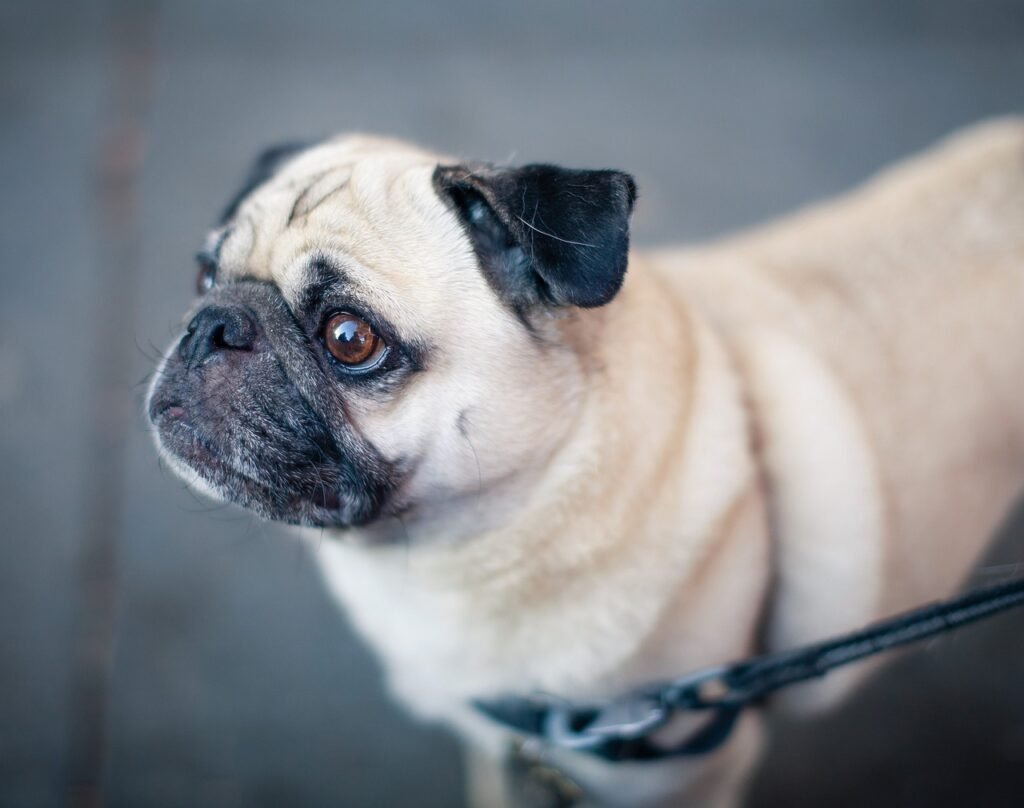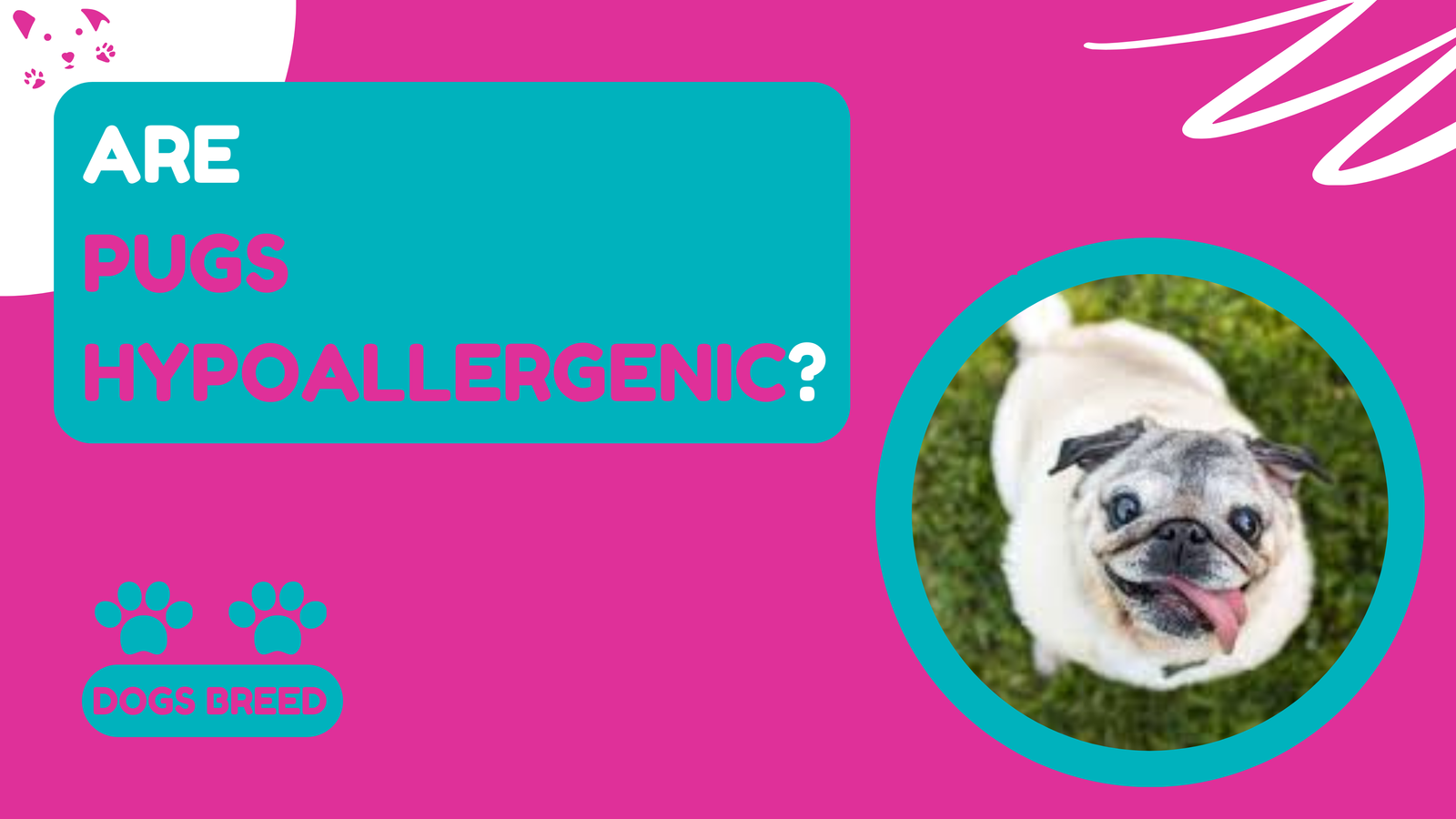The question of whether pugs are hypoallergenic is a common concern for potential dog owners who suffer from allergies. Hypoallergenic dogs are breeds that are less likely to trigger allergic reactions in people.
This trait is especially important for individuals with asthma or severe allergies, as it can significantly impact their health and quality of life.
To understand if pugs fall into this category, it is essential to delve into the causes of pet allergies, the characteristics of pugs, and what makes a dog breed hypoallergenic.
Understanding Pet Allergies
Pet allergies are primarily caused by proteins found in a dog’s skin cells, urine, and saliva. These proteins can trigger allergic reactions when they become airborne and are inhaled or come into contact with a person’s skin.
The most common symptoms of pet allergies include sneezing, runny or stuffy nose, itchy or watery eyes, and skin rashes. In severe cases, exposure can lead to asthma attacks or other respiratory issues.
Contrary to popular belief, it is not the pet’s hair that causes allergies, but rather the dander (tiny, even microscopic, flecks of skin shed by cats, dogs, rodents, birds, and other animals with fur or feathers). Therefore, even hairless breeds can cause allergic reactions if they produce a significant amount of dander.
Characteristics of Pugs
Pugs are a small breed of dog, known for their distinctive wrinkled faces, short muzzles, and large, expressive eyes. Originating from China, pugs have a compact, sturdy build and a short coat. Despite their small size, pugs are known for their big personalities, often described as charming, affectionate, and sociable.
Their coat is smooth and comes in various colors, including fawn, black, apricot, and silver fawn. Pugs are also known for shedding a considerable amount, which is an important factor to consider when discussing allergies. Their shedding, combined with the nature of their dander, makes them a less-than-ideal choice for people with severe allergies.
Are Pugs Hypoallergenic?
The straightforward answer is no, pugs are not hypoallergenic. Pugs, like many other breeds, produce a significant amount of dander, which can trigger allergic reactions.
Their short coat might lead some to believe they shed less or produce fewer allergens, but this is a misconception. Pugs shed continuously throughout the year, and their short, dense hair can easily become embedded in furniture, carpets, and clothing, spreading allergens throughout the home.

Additionally, pugs are known to drool and can be prone to various skin conditions due to their wrinkles, which can harbor bacteria and exacerbate the production of allergens. Regular grooming and cleaning are essential to minimize the spread of dander and saliva, but even with rigorous maintenance, it is difficult to make a pug completely allergen-free.
Managing Allergies with a Pug
For those who are determined to own a pug despite allergies, there are several strategies to manage the situation:
- Regular Grooming: Frequent brushing can help control shedding and remove loose hair and dander. Using grooming tools specifically designed for short-haired breeds can be particularly effective.
- Bathing: Regular baths using hypoallergenic shampoos can help reduce the amount of dander a pug produces. However, it’s important not to over-bathe, as this can dry out the skin and potentially increase dander production.
- Cleaning the Home: Keeping the living environment clean is crucial. This includes vacuuming regularly with a vacuum that has a HEPA filter, washing dog beds and blankets frequently, and using air purifiers to reduce airborne allergens.
- Creating Allergen-Free Zones: Designating certain areas of the home as pet-free zones, such as bedrooms, can help reduce the amount of exposure to allergens.
- Medications and Treatments: Over-the-counter or prescription allergy medications can help manage symptoms. Consulting with an allergist can provide personalized advice and treatment options.
Comparing Pugs to Hypoallergenic Breeds
When looking for a hypoallergenic breed, it’s important to consider breeds that produce less dander and have lower shedding tendencies.
Some popular hypoallergenic breeds include the Poodle, Bichon Frise, and Maltese. These breeds have hair that grows continuously and sheds less, which can reduce the spread of allergens.

In contrast, pugs, with their high shedding rate and significant dander production, are on the opposite end of the spectrum. It is also worth noting that no dog breed is completely hypoallergenic, but some are better suited for allergy sufferers than others.
FAQs: Are Pugs Hypoallergenic?
What does hypoallergenic mean?
Hypoallergenic refers to a substance or animal that is less likely to cause an allergic reaction. In the context of dogs, hypoallergenic breeds produce fewer allergens, such as dander, saliva, and urine proteins, which are common triggers for allergies.
Are pugs hypoallergenic?
No, pugs are not considered hypoallergenic. They produce a significant amount of dander and shed continuously throughout the year, which can trigger allergic reactions in sensitive individuals.
Why do pugs cause allergies?
Pugs cause allergies primarily due to the proteins found in their dander (dead skin flakes), saliva, and urine. These proteins can become airborne and cause allergic reactions when inhaled or when they come into contact with a person’s skin.
Do pugs shed a lot?
Yes, pugs shed a considerable amount. They shed continuously throughout the year, and their short, dense hair can become embedded in furniture, carpets, and clothing, spreading allergens throughout the home.
Can regular grooming reduce the allergens produced by a pug?
Yes, regular grooming can help reduce the amount of dander and loose hair that a pug sheds. Brushing your pug frequently, bathing them with hypoallergenic shampoos, and keeping their living environment clean can help minimize the spread of allergens.
What kind of grooming routine is recommended for a pug to minimize allergies?
A recommended grooming routine for a pug includes brushing their coat several times a week with a grooming tool designed for short-haired breeds, bathing them every few weeks with hypoallergenic shampoo, and cleaning their bedding and living areas frequently. Regularly wiping their face and wrinkles can also help reduce bacteria buildup that can contribute to allergens.
Are there any hypoallergenic alternatives to pugs?
Yes, there are several dog breeds considered to be hypoallergenic. Some popular hypoallergenic breeds include Poodles, Bichon Frises, and Maltese. These breeds produce fewer allergens and are less likely to cause allergic reactions.
Q8: Can I still own a pug if I have allergies?
It is possible to own a pug if you have allergies, but it requires careful management. Regular grooming, thorough cleaning of your home, using air purifiers, and taking allergy medications can help reduce allergic reactions. However, it is important to consult with an allergist before making a decision.
What are some signs that I might be allergic to my pug?
Common signs of pet allergies include sneezing, runny or stuffy nose, itchy or watery eyes, skin rashes, and difficulty breathing. If you experience these symptoms after spending time with your pug, you might have an allergy to them.
How can I create an allergen-free zone in my home?
To create an allergen-free zone, designate certain areas of your home, such as your bedroom, as pet-free zones. Use HEPA air purifiers to reduce airborne allergens, and keep these areas clean by vacuuming and dusting regularly.
Can allergy medications help if I’m allergic to my pug?
Yes, over-the-counter or prescription allergy medications can help manage symptoms caused by pet allergies. Antihistamines, decongestants, and nasal corticosteroids are common treatments. It’s important to consult with an allergist to find the best treatment plan for your specific needs.
Is there a way to test if I’m allergic to pugs before getting one?
Yes, you can get an allergy test conducted by an allergist to determine if you are allergic to dogs, including pugs. Additionally, spending time with a pug in a controlled environment can help you observe if you have any allergic reactions before committing to ownership.
Conclusion
While pugs offer numerous qualities that make them appealing pets – such as their affectionate nature, playful demeanor, and unique appearance – they are not a hypoallergenic breed.
Their propensity to shed and produce dander can make them a challenging choice for individuals with allergies. However, with diligent care and management, it is possible to mitigate some of the allergic reactions.
For those who love the pug breed and are considering adding one to their family despite allergies, it’s crucial to weigh the pros and cons and be prepared for the additional responsibilities that come with managing allergies.
Regular grooming, thorough cleaning, and possibly using medications can help, but it’s important to have realistic expectations about the level of allergen control that can be achieved.
For more insights on the lifespan and care of pugs, you might find these articles helpful: How Long Do Pugs Live? Unveiling the Secrets of Pug Longevity and Pug Dog Breed: Characteristics, Lifespan, and Essential Grooming Tips.
In summary, while pugs are a beloved breed for many reasons, they are not the ideal choice for those seeking a hypoallergenic pet.
Understanding the nature of pet allergies and the specific traits of pugs can help prospective owners make informed decisions and take appropriate measures to create a comfortable living environment for both themselves and their furry friends.


3 thoughts on “Are Pugs Hypoallergenic? Uncover the Surprising Truth!”